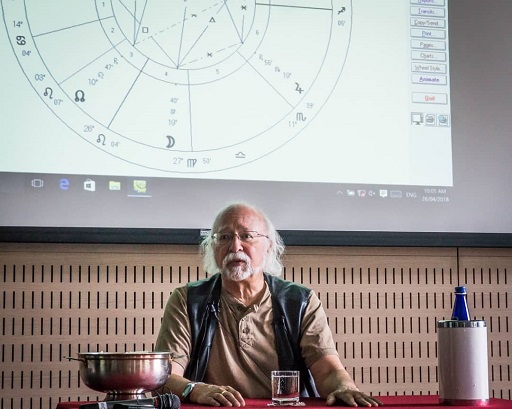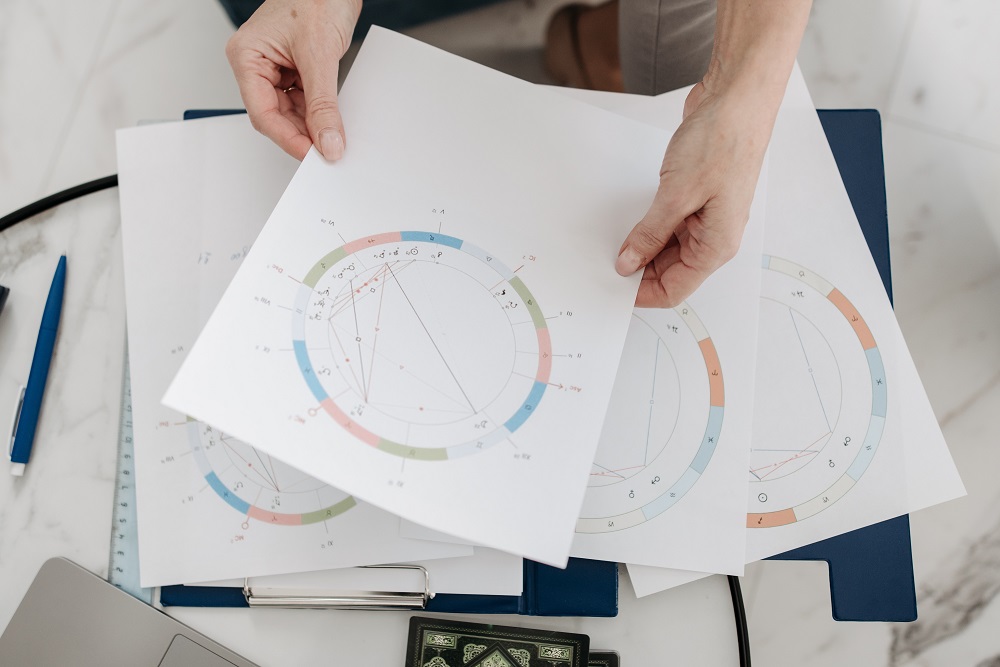Charting the Path
I’ve really enjoyed all of our Zoom sessions with students and members! The questions have been uniformly excellent. All of them have been worthy of deeper responses than the time we have had, but the clock keeps ticking. The hardest questions for me have been the ones about specific chart configurations. I love answering them, but I’ve almost always had to edit them down. That’s because, with a question about the south node for example, we naturally need to look at the sign and house involved – but where is the south node’s ruler? What if it has two rulers? What aspects do other planets form to that ruler or to the node itself? And what about the north node?

By this point in your learning curve, you know how it all works – there are no “simple questions” about anyone’s nodes! Most of the time, in order to understand the nodal axis, you really need to understand half the chart. In real life, my readings usually take a couple of hours. You can do the math – if I put half that time into answering a question about half of someone’s chart . . . well, there goes our hour. And that leaves us no time for any other questions.
This has presented a real dilemma for Jeff, Catie, and me. On one hand, real astrology depends upon our looking at the whole chart integratively. On the other, we’ve felt that answering the diversity of good questions we’ve been getting has probably served the greater good more effectively than devoting an hour to looking at one single chart. It’s a dicey judgment call, for sure.
“You are doomed to make choices. This is life’s greatest paradox.“
-Wayne Dyer
For the student Zoom call on May 20th, we are going to try a different approach. The first 30 minutes will be the usual Q & A. During the second 30 minutes, we will put an actual chart up on the screen – and that second “30 minutes” might turn out to be 45 minutes, we’ll see how it goes.
We’ve usually been getting 12- 15 questions submitted for each program. I’ve generally managed to answer most of them. Next time, we will need to be pickier. I’ll choose between four and six of the most interesting ones and respond to them in that first half hour. Then we’ll put the chart up on the screen.
Which chart? And how to deal with the time limitations? Here’s how we plan to do it . . .

Everyone is free to submit a chart – and it’s fine if it is your own. Jeff is going to come up with some random method for choosing which chart we will use. All charts are interesting, so we have no agenda there at all. I’m sure that he will be fair and transparent about his selection methods. For purposes of confidentiality, we will obscure the identifying characteristics of the chart – but please do remember that these Zoom calls are archived for future student use. The analysis will be available to FCEA students “‘til the sun refuses to shine and the mountains tumble to the sea . . .” If potentially having your chart made public makes you uncomfortable, think twice about submitting it. Again, we’ll not show your name. Realistically, however, it’s not too hard to deduce birth information from planetary positions, and from there, someone might connect the dots.
Since we will have only 30 or 40 minutes to spend with the chart, we will need to keep the process very focused. If you choose to submit a chart, please also submit a question about some specific configuration within it – a planet or node or aspect, whatever . . . even a human question, such as “talk about career” or “why did I marry that creature from Outer Space.” I will use that question as our launching pad, and see where it leads us. Again, the clock will be our guide there. We’ll cast our interpretive net as widely as time allows.
We know that once you have learned the basic vocabulary, much help comes from seeing real-life interpretation in action. That’s what this little half-hour demo will be about. On a closely related note, I recently did a birthchart reading for a woman in Switzerland. She has agreed to let me use it as a teaching tool in our school. Usually with the private work I do, I just make audio recordings. This one is a video. It runs about two hours in length and it’s divided into four more “bite-sized” parts. My aim was to create an example of how I actually bring all of our 100-level course material to a practical, integrated focus with a client who is not an astrologer. We’ll find a place for it very near the end of the Apprentice Level part of the FCEA program.
Meanwhile, let me chime in and wish a warm welcome to our newly-fledged FCEA tutors, Marie O’Neill, Joey Paynter, and Teal Rowe. They were all already fine astrologers, and they faced a steep learning curve mastering Moodle and the specific content of our program. Six began; three survived – and thanks for hanging in there!
